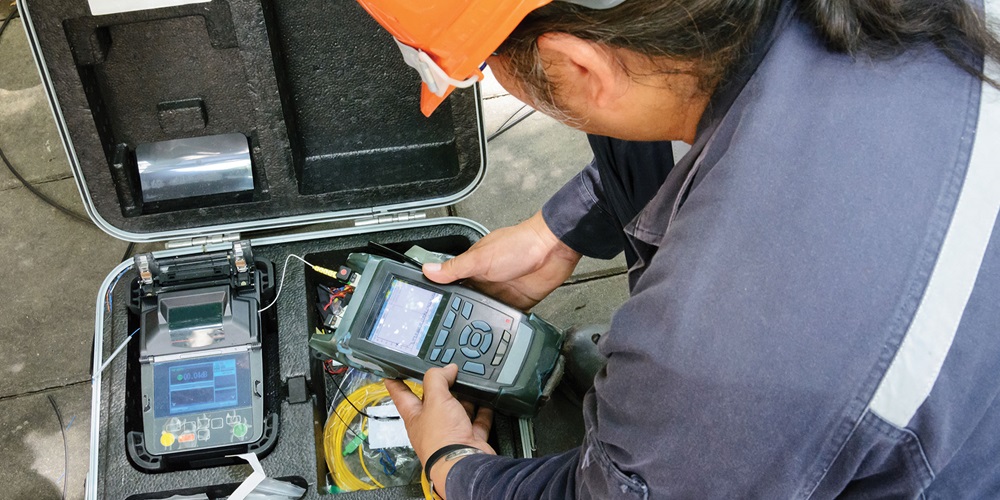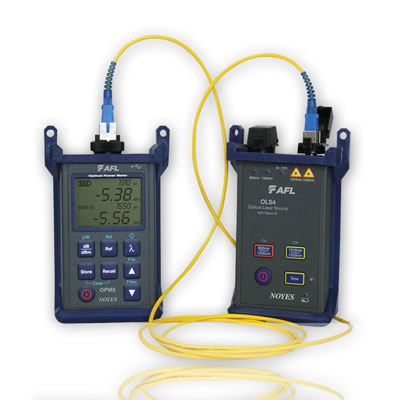Ofda helps with accurate fibre measurement in various applications.
Discover the Significance of Optical Fibre Testing in Modern Telecommunications
In the world of modern-day telecommunications, the significance of optical fiber testing can not be overstated, as it acts as the foundation for ensuring network dependability and efficiency. By carrying out normal testing methods, operators can preemptively identify prospective problems such as signal deterioration, therefore guarding versus disruptions that could verify costly. Advanced techniques like Optical Time-Domain Reflectometry play a pivotal role in this process, yet numerous may neglect the broader ramifications of these methods. What are the particular benefits that regular testing offers, and how might it form the future landscape of telecommunications?

Understanding Optical Fiber Screening
Optical fiber testing is an essential procedure in telecoms that makes certain the honesty and efficiency of fiber optic networks. This testing incorporates a series of procedures designed to review the physical and functional characteristics of optical fibers - robotic vision. Key criteria examined consist of optical power loss, bandwidth ability, and fault area, which are crucial for preserving premium interaction links
The testing process typically entails making use of specialized tools such as Optical Time-Domain Reflectometers (OTDR) and Optical Power Meters. OTDRs are employed to recognize and characterize mistakes, mates, and connectors within the fiber, while power meters gauge the transmitted light signal stamina to ascertain effectiveness.
In addition, testing is conducted at different stages, consisting of during setup, maintenance, and troubleshooting, to ensure that the network fulfills market criteria and operational requirements. Conformity with standards set by companies like the International Telecommunication Union (ITU) and the Telecommunications Market Association (TIA) is vital.
Benefits of Normal Evaluating
Regular testing of optical fibres yields countless advantages that significantly improve network integrity and efficiency. One of the primary advantages is the early detection of prospective problems, such as breaks or destruction in the fibre, which can lead to expensive downtime if left unaddressed (robotic vision). By determining these troubles proactively, telecoms suppliers can minimize service disturbances and make sure constant connectivity for their consumers
In addition, regular testing helps to maintain the integrity of signal quality. As optical fibres age, their performance can be impacted by aspects such as ecological problems and physical anxiety. Regular analyses permit the monitoring of signal loss and overall transmission efficiency, making sure that the network operates at optimal levels.
Another considerable advantage is conformity with industry criteria. Normal screening supports adherence to regulatory needs, thereby reducing lawful and economic threats connected with non-compliance. It boosts the overall life-span of the fibre facilities by promoting timely upkeep and repair work.

Typical Examining Methods
Evaluating optical fibers utilizes different techniques to guarantee the stability and efficiency of telecommunications networks. Among the most typical strategies is Optical Time Domain Reflectometry (OTDR), which evaluates the whole size of the fiber by sending a pulse of light and gauging the representations triggered by flaws or breaks. This method gives detailed information regarding the place and severity of mistakes.
One more prevalent approach is the use of Optical Power Meters, which determine the amount of light transferred with the fibre. This strategy helps identify the loss of signal strength, making sure that it satisfies industry requirements. Furthermore, Aesthetic Mistake Locators (VFL) are employed to determine breaks or extreme bends in the fiber by forecasting a noticeable laser light into the cable television.
Insertion loss screening is additionally important, as it measures the loss of signal power arising from links and interlaces check this site out within the network. Furthermore, using Polarization Mode Dispersion (PMD) screening evaluates the effect of fiber attributes on signal honesty.
Each of these approaches plays a vital function in keeping the efficiency and dependability of optical fibre networks, eventually adding to smooth telecommunications operations.
Effect On Network Performance
The honesty and efficiency of optical fibre networks directly influence overall network performance. In modern-day telecommunications, the performance of information transmission counts heavily on the quality of the optical fibers made use of. Any deterioration in the fibre's problem-- whether due to physical damages, contamination, or excessive flexing-- can result in increased attenuation and signal loss, considerably affecting information stability and rate.
Regular optical fiber testing is necessary to recognize and correct prospective issues prior to they manifest as network failings or stagnations. Strategies such as Optical Time Domain Name Reflectometry (OTDR) and insertion loss screening allow service technicians to gauge the efficiency of fiber links properly. These tests not only evaluate the physical problem of the fibres but additionally guarantee conformity with sector criteria, thereby securing the network's integrity.
Furthermore, a properly maintained optical fiber network adds to lowered operational expenses and enhanced consumer complete satisfaction, as end-users experience less interruptions and greater data rates. Eventually, the emphasis on rigorous optical fibre testing methods works as a foundation for sustaining robust telecommunications facilities, making certain that company can fulfill the growing needs for bandwidth and connection in today's electronic age.
Future Fads in Checking
As we look in advance, innovations in innovation are positioned to improve optical fibre screening in telecommunications. The rise of automation and expert system (AI) is anticipated to enhance the performance and precision of screening processes. Automated screening systems can carry out detailed analyses with marginal human treatment, dramatically decreasing the possibility for mistakes and speeding up time-to-deployment.
Furthermore, the learn the facts here now assimilation of equipment knowing algorithms will certainly enable predictive maintenance, permitting network providers to foresee prospective problems prior to they rise into failures. This positive method not only improves network dependability however additionally optimizes functional prices.
Another arising pattern is the development of mobile screening gadgets that offer real-time analysis - robotic vision. These devices will encourage specialists to carry out on-site diagnostics swiftly, facilitating quicker resolutions and boosting solution high quality
The expansion of 5G networks better demands the evolution of testing techniques. As data transfer needs enhance, typical testing techniques may no longer suffice. Ingenious remedies such as optical time-domain reflectometry (OTDR) and advanced spectral evaluation will come to be vital in making sure the honesty and performance of high-speed links.

Verdict
To conclude, optical fiber testing is crucial for guaranteeing the click integrity and integrity of modern-day telecoms networks. Routine testing practices not just help determine possible issues such as signal loss and faults however additionally contribute to improved network efficiency and consumer contentment. As the demand for smooth connectivity proceeds to expand, the adoption of sophisticated testing approaches will certainly play an important role in maintaining high-quality network standards and supporting the developing landscape of telecommunications.